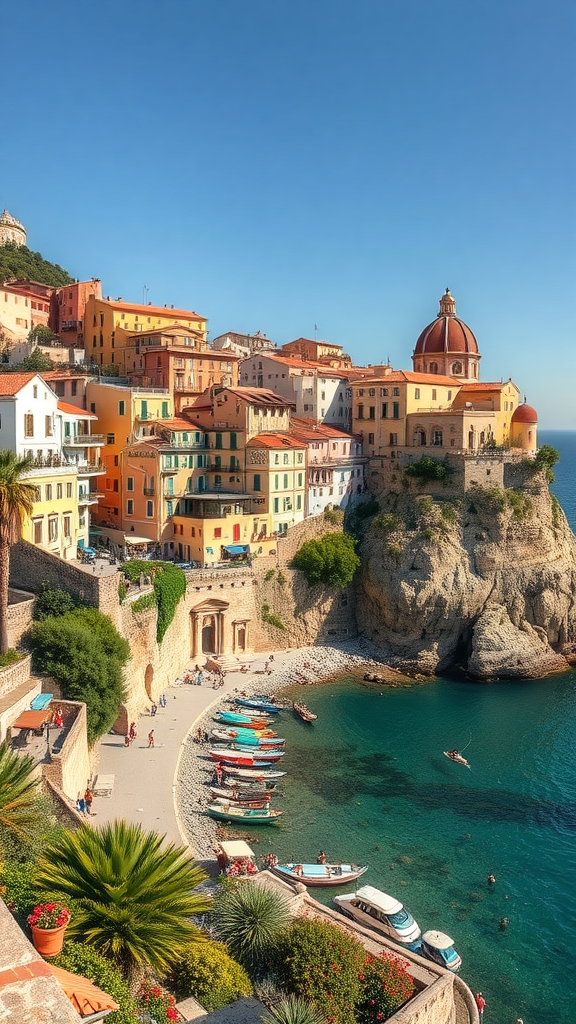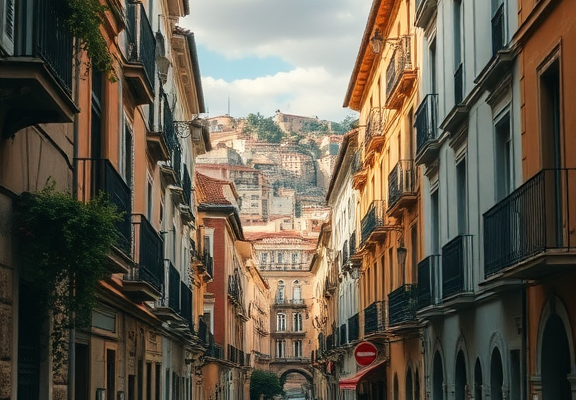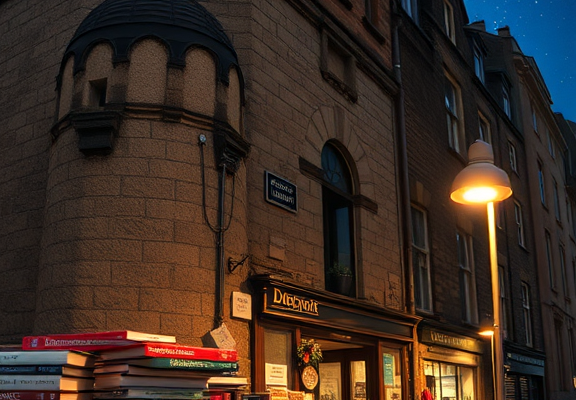Essential Tips for Planning Your Dream Spain Trip
Planning your dream trip to Spain can be an exciting adventure, filled with vibrant cultures, stunning landscapes, and mouth-watering cuisine. To ensure your journey is as enjoyable as possible, it’s essential to have a well-structured plan. Here are some essential tips to help you navigate your Spain trip seamlessly.
Thank you for reading this post, don't forget to subscribe!Determine Your Destinations
Spain boasts diverse regions, each with its unique charm. Start by deciding which areas you want to visit. Popular destinations include:
- Barcelona – known for its stunning architecture and beaches.
- Madrid – the capital, famous for its vibrant nightlife and rich art scene.
- Seville – the heart of flamenco and traditional Andalusian culture.
- Valencia – home to the famous paella and beautiful parks.
- San Sebastián – a picturesque coastal city known for its cuisine.
Each city offers different experiences, so research what attractions and activities interest you the most.
Timing Is Key
Your travel dates significantly affect your experience in Spain. Here are important factors to consider:
- Seasonality: Summer sees the highest number of tourists, which can mean crowded attractions and higher prices. Consider spring (March to May) or fall (September to November) for milder weather and fewer crowds.
- Local Festivals: Spain is famous for its festivals, such as La Tomatina in Buñol or Feria de Abril in Seville. Attending a festival can enrich your experience, but be sure to book accommodations early.
Budget Wisely
Before embarking on your journey, create a budget that covers essential expenses:
- Accommodation: Options range from luxury hotels to affordable hostels or vacation rentals. Research your options and book early to secure the best rates.
- Food: Eating out in Spain can be a delightful experience. Consider budgeting for tapas, local dishes, and dining experiences. Don’t forget to reserve a spot at popular restaurants, especially in tourist-heavy areas.
- Transport: Spain has an extensive public transport system. Look into options like trains, buses, and metro services. If you’re traveling between cities, consider getting a rail pass for savings.
Learn Basic Spanish Phrases
While many Spaniards speak English, knowing a few basic Spanish phrases can enhance your experience and show respect for the local culture. Try learning phrases such as:
- Hola – Hello
- Gracias – Thank you
- Por favor – Please
- ¿Cuánto cuesta? – How much does it cost?
Pack Accordingly
Your packing list should cater to the activities you have planned. Here are essentials to include:
- Comfortable Walking Shoes: You’ll likely do a lot of exploring, so comfortable shoes are a must.
- Seasonal Clothing: Check the weather forecast for your travel dates and pack layers for variable temperatures.
- A Travel Guide or App: Download a travel guide or app to help with navigation and tips while on the go.
Stay Connected
To stay connected during your Spain trip, consider getting a local SIM card or using an international roaming plan. This will help you navigate and communicate easily without incurring excessive charges.
Immerse Yourself in the Culture
Spain has a rich culture and history. Take time to explore local customs, try regional cuisines, and participate in community events. Visiting local markets can also provide a unique insight into daily life.
By following these essential tips, you’re on your way to creating unforgettable memories during your Spain trip. Whether it’s the breathtaking landscapes, the delicious food, or the warm-hearted people, Spain has something special waiting for you. Embrace the adventure and enjoy every moment of your travel experience!
Exploring Spain’s Diverse Regions: A Cultural Journey
When you think of Spain, images of vibrant festivals, delicious tapas, and stunning architecture come to mind. But did you know that this beautiful country is home to a rich tapestry of cultures, traditions, and landscapes? Each region of Spain offers its own unique flavor, making it a dream destination for any traveler. Let’s embark on a journey through the diverse regions of Spain and discover what makes each one special.
The North: Mountains and Coastlines
The northern regions of Spain, including Galicia, Asturias, and the Basque Country, boast breathtaking natural beauty and rich traditions. Galicia, with its lush green hills and stunning coastline, is known for its seafood, particularly octopus. Travelers can explore charming fishing villages and vibrant cities like Santiago de Compostela, home to the legendary pilgrimage route.
Asturias enchants with its natural parks and mountain ranges. It’s a paradise for hikers and outdoor lovers. The traditional cuisine, featuring dishes like fabada (a hearty bean stew), will warm your heart. The Basque Country stands out with its unique language, Basque, and its world-renowned culinary scene. Don’t miss the chance to try pintxos, small snacks often enjoyed with a local glass of txakoli.
The East: Mediterranean Bliss
Traveling to the eastern coast, you enter the vibrant world of Catalonia and Valencia. Barcelona, the capital of Catalonia, is famous for its Gaudí architecture. La Sagrada Familia and Park Güell are must-visit sights. The city’s atmosphere is alive with art, music, and lively tapas bars.
Further south, Valencia offers a more laid-back vibe with its beautiful beaches and stunning City of Arts and Sciences. Treat yourself to a traditional paella, which originated here. Don’t forget to wander through the city’s historic sites, each telling a tale of its rich history and cultural evolution.
The South: A Touch of Andalusia
No exploration of Spain’s regions would be complete without mentioning Andalusia. Known for its flamenco music and dance, this region is also home to iconic cities like Seville, Granada, and Córdoba. Seville, with its charming streets, is famous for its Alcázar and the vibrant Feria de Abril festival.
Granada’s Alhambra is a mesmerizing palace that reflects the region’s Moorish history, while Córdoba’s Mezquita is a stunning mosque-cathedral blending cultures beautifully. The sunsets over the patios of Andalusia are something you must see in person, painting the sky in hues of orange and pink.
The Central Region: Heart of Spain
In the heart of Spain lies the region of Castilla y León, where you can explore medieval cities like Segovia and Salamanca. Segovia boasts a stunning aqueduct and a fairy-tale castle, the Alcázar. Salamanca, with its historic university, buzzes with students and lively atmospheres, making it a fantastic place for young travelers.
Don’t forget to relish the local wines, as this area is renowned for its vineyards. Sample the rich flavors that accompany every dish, from hearty stews to exquisite pastries.
<h3The Canary Islands: Tropical Escape
For those looking to relax under the sun, the Canary Islands are a tropical paradise. Each island has its own vibe; for example, Tenerife offers stunning volcanic landscapes and beaches, while Lanzarote features unique black sand beaches and impressive art by César Manrique. Hiking enthusiasts can tackle Mount Teide, Spain’s highest peak, and witness stunning views that will leave you breathless.
Baleares: Island Serenity
Similarly, the Balearic Islands, including Mallorca and Ibiza, provide idyllic escapes. Mallorca boasts beautiful beaches, charming villages, and the breathtaking Serra de Tramuntana mountains. Ibiza may be globally known for its nightlife, but it also offers serene landscapes and secluded beaches, ideal for resting and reflecting.
A trip to Spain is not just about visiting another country; it’s about immersing yourself in a diverse cultural landscape. From the mountains to the beaches, each region surprises with its own culinary delights, traditions, and histories. So, pack your bags and get ready to explore the wonders of Spain!
Conclusion
As you prepare for your dream Spain trip, keep in mind that the journey is just as valuable as the destination. Embrace the beautiful diversity of Spain’s regions, from the sun-kissed beaches of Costa del Sol to the vibrant streets of Barcelona and the historic architecture of Madrid. Understanding each area’s unique culture and customs will enrich your experience, allowing you to connect more deeply with the local way of life.
Planning is key to maximizing your adventure. Start by choosing the best time to visit, considering factors like climate and local festivals. Budgeting your expenses, including accommodations, transportation, and activities, will help you stay on track and avoid overspending. Make a flexible itinerary that allows for spontaneous moments while ensuring you don’t miss must-see attractions.
Don’t forget to try authentic Spanish cuisine – every dish tells a story of the region it comes from. Whether it’s savoring tapas in Seville or indulging in paella in Valencia, food is a significant part of the Spain experience.
Engage with locals; they can provide invaluable recommendations and insights that you won’t find in typical tourist guides. By combining thoughtful planning with a genuine curiosity about Spain’s diverse regions, your trip will be filled with unforgettable memories. Each city and landscape will leave a mark on your heart, reminding you that Spain is not just a place to visit but a journey into a rich tapestry of culture, history, and warmth. Embrace each moment, and your Spain adventure will surely become one of the highlights of your travels.






